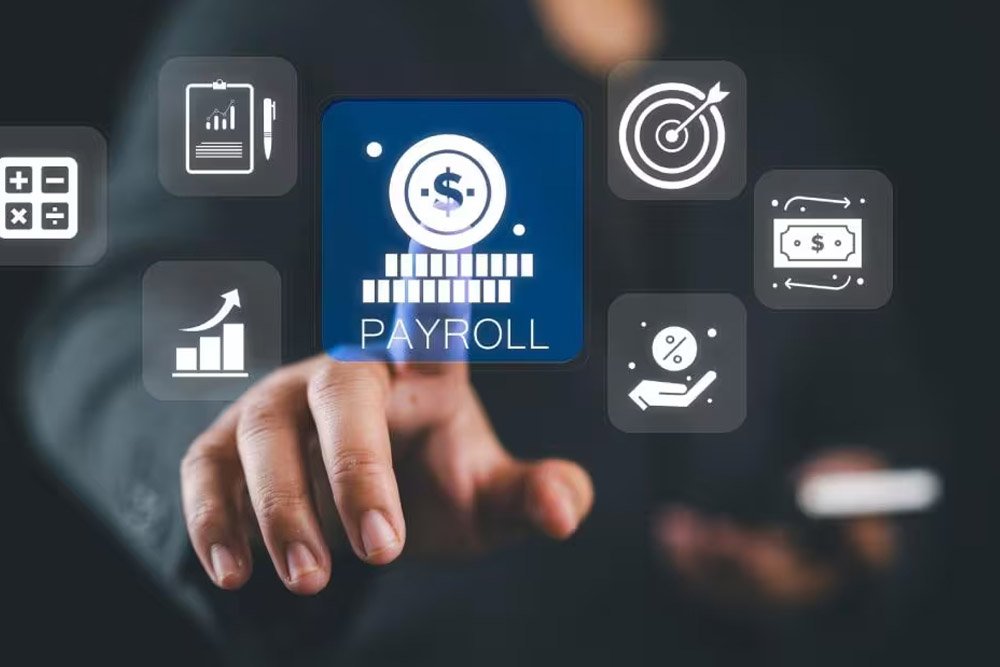Why Businesses Are Turning to Automation
Businesses today operate in an environment where efficiency and compliance are more critical than ever. Traditional payroll processes, which often rely on spreadsheets, manual entries, and physical documentation, have proven to be error-prone and time-consuming. Companies are actively searching for solutions to optimize operations in an era of growing regulatory complexity and heightened employee expectations. As a result, many organizations have started automating payroll to save time, reduce mistakes, and free up their HR professionals for more strategic tasks.
The shift towards automation is being observed among large enterprises, startups, and small businesses. Whether a company has 10 or 10,000 employees, digital payroll offerings level the playing field. As highlighted in HR industry news, the pressure to keep payments accurate and on schedule has only increased in recent years, reinforcing the significance of embracing modern payroll technology. Adapting cloud-based payroll platforms reduces the burden of managing complex tax regulations, eliminates manual bottlenecks, and helps build trust between organizations and their employees.
What Is Payroll Automation?
Payroll automation refers to using technology-driven systems that take over repetitive tasks once performed by people. This encompasses everything from recording work hours to calculating pay, deducting the right taxes, and generating compliance-ready reports. By integrating with existing HR and time-keeping platforms, automated payroll ensures that employee records remain consistent across the board. When implemented well, these systems can automate direct deposits, file taxes electronically, and generate insights that help businesses budget more effectively.
Cloud-based automation has become the new standard for many reasons. Not only does it provide instant updates for compliance changes, but it also allows payroll teams to process payments and access records securely from anywhere. This means fewer delays and greater flexibility for geographically dispersed teams or hybrid workers. Another crucial benefit is the reduction in manual data entry, which is often cited as a leading cause of payroll mistakes.
Common Challenges Traditional Payroll Faces
- Frequent Human Error:When payroll depends on manual calculation and keyed inputs, errors are almost inevitable. These mistakes can result in incorrect pay, missed deductions, and costly compliance issues for the organization.
- Labor-Intensive Processes:Many small business owners and HR professionals report spending entire days—or even weeks—each month just making sure payroll is correct. This time could be much better invested in strategic workforce planning and employee development initiatives.
- Compliance Headaches:Labor laws and tax regulations are evolving constantly. Staying up to date with every change, especially across multiple jurisdictions, is a significant drain on resources and increases the risk of penalties for non-compliance.
- Security Risks:Relying on paper checks, stored files, or unsecured spreadsheets puts sensitive payroll data at risk. Breaches or losses not only impact the company but can also erode employee trust.
Recent analysis, such as the Gartner HR technology spending report, points out that businesses sticking with manual processes face workflow slowdowns and repeated inaccuracies which ultimately stunt organizational growth. The cost of correcting payroll errors can significantly exceed the investment in automated solutions.
The Benefits of Automated Solutions
The move to automated payroll solutions can transform a company’s HR operations from a burden into a strategic advantage. Automated systems nearly eliminate common manual errors, providing HR with tools to easily review, correct, and report on payroll data in real time. This increased accuracy ensures employees are paid correctly and on schedule, reducing payroll inquiries and improving overall satisfaction.
- Minimized Errors:Automated payroll tools automatically handle salary calculations, deductions, and tax withholdings according to up-to-date rules, lowering the risk of mistakes that might require costly corrections.
- Lower Administrative Costs:By eliminating redundant manual processes, payroll administration can often become less expensive and less time-consuming. These savings can be reinvested elsewhere in the company.
- Stronger Compliance:Leading payroll tools deliver updates for new employment regulations and tax laws automatically, supporting ongoing compliance and giving businesses peace of mind.
- Improved Data Security:Digital payroll systems store sensitive employee information using encryption and access controls, providing better safeguards than traditional paper files or unsecured digital documents.
- Happier Employees:Employees consistently paid on time and accurately report higher trust in their employer, improving morale and lowering staff turnover.
Companies looking to grow or adapt quickly cite these benefits as vital reasons to transition. Payroll automation frees decision-makers to focus on strategic objectives, and the ripple effect can improve everything from compliance confidence to employee engagement.
Steps to Transitioning Your Payroll
Migrating to an automated payroll solution is a significant change, but it can be managed with a practical and incremental approach. A clear plan helps reduce resistance, maintain data integrity, and build trust with everyone affected.
- Conduct a thorough review of your existing payroll and HR processes to find inefficiencies and recurring errors.
- Decide which outcomes are essential for your business: error reduction, faster processing times, easier compliance, or support for a growing workforce.
- Research and compare various payroll solutions, considering scalability, integrations, and customer reviews before selecting.
- Create detailed internal process guides tailored to your workflow so all team members understand their roles during the transition.
- Provide hands-on training and resources, and consider running payroll in tandem (old and new systems) for one or two cycles to catch issues before complete migration.
- Schedule routine audits post-launch to ensure that the system remains up to date and delivers the expected accuracy, compliance, and time savings.
Open communication is essential throughout the process. Letting staff know what to expect creates smoother adoption and less resistance.
Best Practices for Implementation
Stepping into the world of payroll automation isn’t just about selecting a vendor and flipping the switch. It involves careful preparation and ongoing dialogue across the company to get the best results from a new system.
- Involve leaders from HR, finance, and IT at the planning stage to establish a unified approach and clear task ownership.
- Document all current payroll processes so nothing essential is lost during the move. A clear map of previous workflows helps with training and troubleshooting.
- Work proactively to share changes and provide staff with support resources, such as FAQs, help desks, and demonstration sessions.
- Choose providers known for strong onboarding and customer support—you’ll want timely help if issues arise or as regulations shift.
- Monitor the new system’s reports and audit trails frequently, especially in the first few months, to uncover and fix any inconsistencies before payroll is processed.
Real-world examples show that businesses that appoint an internal “payroll champion” or create a small task force to oversee implementation often see faster adoption and greater employee satisfaction. Making the transition a team effort pays dividends in confidence and long-term efficiency.
Future Trends in Payroll Technology
The landscape of payroll technology continues to shift as innovations emerge to meet the demands of a global, mobile workforce. Artificial intelligence and machine learning are making systems faster and wiser, anticipating errors before they happen and automating complex, multi-country compliance tasks. Predictive analytics now helps businesses budget more effectively, forecasting labor expenses based on past trends and current data.
Blockchain technology makes payroll more secure, offering transparent audit trails and rapid international payments. With mobile payroll apps, employees can check their pay, access tax documentation, and manage withholdings from their phones, increasing transparency and control. Companies that stay aware of these trends and adapt to the most applicable solutions will be best equipped to support employees and keep operations running smoothly, whatever the future brings.
Frequently Asked Questions
- Is payroll automation expensive?While the initial investment may seem high for some businesses, the recurring gains from error reduction, reduced payroll hours, and lower compliance risks typically offset the cost within the first year. Many providers offer scalable packages that support companies as they grow.
- Does automation threaten payroll jobs?Automation removes repetitive, error-prone tasks, enabling payroll professionals to focus more on regulatory updates, data analysis, and employee service initiatives. It’s a shift in responsibility—not elimination—and often increases job satisfaction among payroll staff.
- Can payroll technology keep up with regulations?Most reputable systems update automatically to reflect new tax laws and compliance needs. Paired with regular internal review, this keeps organizations protected throughout the year.
Payroll automation is rapidly redefining how businesses operate and support their teams. With fewer errors, improved compliance, and time previously spent on manual tasks reinvested into growth, the benefits are too substantial to overlook. For organizations committed to efficiency and security, it’s an essential tool in today’s evolving business landscape.



